
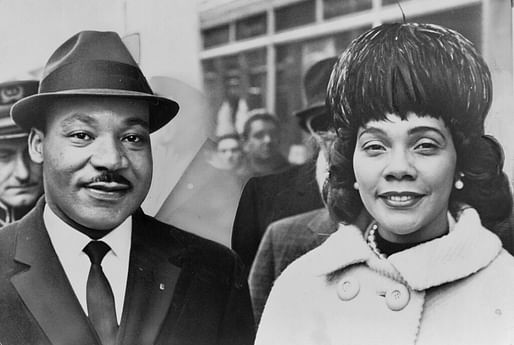
Happy Martin Luther King Jr. Day! Today marks the 34th year the federal holiday has been observed, in celebration of the great civil rights leader. Dr. King fought against racial inequality through nonviolent resistance and civil disobedience, seeking progress in the U.S. on matters of civil rights. Shortly after King's assassination, the Civil Rights Act of 1968 was passed by Congress and signed into law by President Lyndon Johnson, marking a step towards the "progress" King fought for.
The fruits of Dr. King's work can be seen throughout numerous facets of our society, and undoubtedly, progress is still being made. In architecture, we've seen issues of equality addressed, something only possible due to the foundations of early civil rights leaders like King. In celebration of this special day, here is a round up of some of Archinect's coverage on issues of equality, and the amazing people working to further progress in this area.
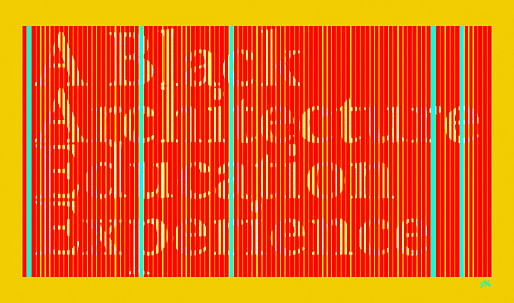
↑ A Black Architecture Education Experience
Demar Matthews, an African-American architecture student, writes a moving essay recounting his experience as a black man studying in a predominantly white field. Matthews looks into issues of minorities in architecture and seeks to discover what his findings mean for his future as a professional in architecture.
↑ Remembering Phil Freelon: A Full Transcript of Our Podcast
A transcript of our Archinect Sessions conversation with Phil Freelon, an architect that dedicated his life to creating meaningful, thoughtful works of architecture that contribute to American culture and civil rights. The acclaimed architect passed away in July of last year, after having been diagnosed with ALS in March 2016.
After Freelon's passing, AIA CEO Robert Ivy said, "Phil was a trailblazer in the architecture community and a pioneer of public spaces. His contributions to the design of the National Museum of African American History and Culture, notable projects in communities across the United States, as well as his positive influence on the profession and our society will be felt for years to come."
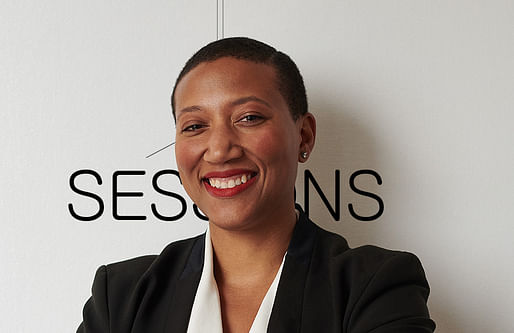
↑ Madame President Goes ALL-In: A Conversation with NOMA President Kimberly Dowdell
For Archinect Sessions episode #145, we were joined by Kimberly Dowdell, a principal at HOK in Chicago and the current President of the National Organization of Minority Architects, an organization committed to minimize the effects of racism in the profession of architecture. Be sure to tune in for this enlightening discussion.
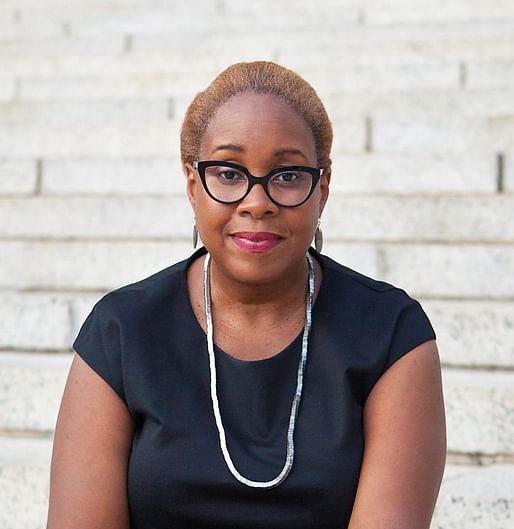
A look at the Harvard University Graduate School of Design's launch of the African American Design Nexus (AADN), virtual collection that highlights African American architects and designers from various generations, practices, and backgrounds. This online resource comes as a crucial mode of representation. For students like Demar Matthews, the issue of unfamiliarity with minority leaders in architecture can be reconciled through dynamic offerings such as these.

↑ Zena Howard: Architecture's powerhouse strategist and advocate for diversity
As Principal and Managing Director of Perkins+Will's North Carolina practice, Zena Howard's work is a reflection of her passion as an architect, mentor, team builder, and strategist. Howard talks of the challenges in her journey as an African-American female architect, addressing the difficulty in finding mentorship, unconscious bias from colleagues through insensitive comments or attitudes, and her focus on not allowing these obstacles to defeat her.
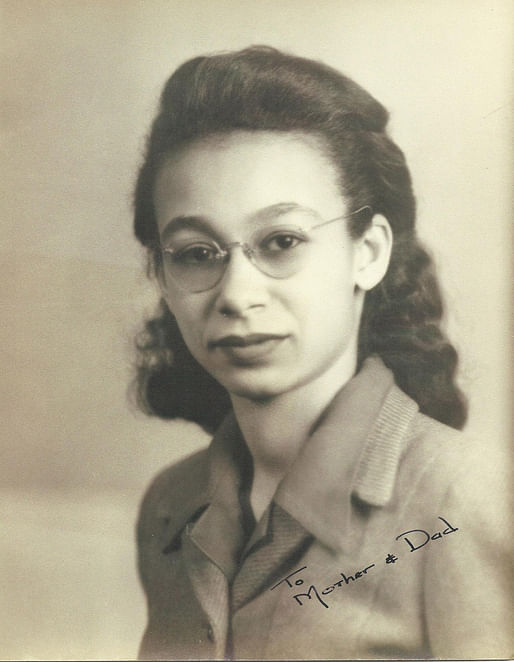
Brown was the first African-American women to graduate with an architecture degree, and the second professionally licensed African-American female architect in the nation. In a time when we are working toward further growth in equality, a look at pioneers of this cause is crucial.
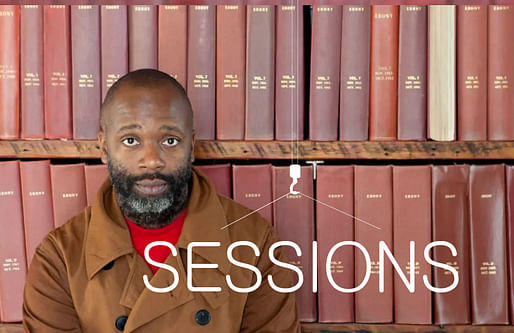
↑ A Conversation with Theaster Gates; Archinect Sessions Episode #136
For episode #136 of Archinect Sessions we had an inspiring conversation with Theaster Gates, a multidisciplinary artist, urban planner and community-focused social activist. His focus on underserved and minority communities embrace the spirit of social justice and activism. He is the founder of Rebuild Foundation, a non-profit whose work is informed be three core values: black people matter, black spaces matter, and black object matter. Make sure you check it out!

↑ Hip-Hop Architecture with Sekou Cooke
On this episode of Archinect Sessions we talked with Sekou Cooke, Syracuse-based architect and educator who curated of the 2018 exhibition at the Center for Architecture, "Close to the Edge: The Birth of Hip-Hop Architecture" which looked at Cooke's emergent idea of "Hip-Hop Architecture" and how hip-hop's primary modes of expressions — deejaying, emceeing, b-boying, and graffiti — have impacted the built environment.

↑ The Gender Pay Gap in Architecture
Eleanor Marshall delves into the complicated issue of the gender pay gap in architecture.

↑ The New Wave of Female Powerhouses are Pushing the Boundaries of Professional Practice
This highly popular piece features the work of a number of female practitioners making a difference in their community through design and pioneering the field of professional practice by producing great work.

This curated list of lectures, talks, and symposia exploring the topic of doversity in architecture.

This curated list of lectures, talks, and symposia exploring the topic of race in architecture.
All good points (and beneficial), but misses a significant percentage of African American people. Recent analysis has discovered that approximately 39% of African Americans live in suburban communities- "attacking" problem as an urban (a heavily coded term there) one won't reach all the other social segments that identify as black receiving micro aggressive guidance away from professions that might be seen as culturally significant. Law and Medicine are different in that you're encouraged to serve "your people" versus others. Passive segregation under the guise of doing right by your people and money.
To the point of exceptionalism- yes. It need to be taken out of educational expectations. The notion that you can take the financial risk with no worries wrt the outcomes already belies some serious assumptions about who you are and the access you have to other resources.
Pedagogy need to be expanded and inclusive, recognizing the cultural constitutions of everyone. Over the next 30 years this will become increasingly important and we experience a significant demographic shift and re-examine the relationship the public has with the practice of architecture. If that expands the authentic interactions with African-American (and other non-white groups) at the elementary and h.s. levels will be more authentic and inviting- strengthening the previously suggested initiatives.
All 4 Comments
Happy MLK Day!
Sean, I have a straight forward but complex question. Why do you think there are (proportionally) few African Americans in architecture? I know racism kept many people of color out in the past and still affects how many of us are treated by the majority, but it seems like there should be more, especially given the widely proclaimed progressive values we as a profession and this site in particular seem to have. I have no ulterior motive when I ask beyond trying to understand this lack of diversity, at least when it comes to certain minority groups. Thanks in advance.
Hey Thayer-D, I appreciate the question. I think it's a complicated and multi-faceted one that would take a full conversation to explore. Nevertheless, I think the profession has definitely come a long way, but the participation of minorities in architecture goes beyond architecture. For example, I can't tell you how many black kids I've met who see me, or any other of my minority colleagues as accomplished professionals and think that it is an impossibility for them. They live in households and environments where the thought of pursuing something like architecture is the same as saying they want to be astronauts.
Of course, some ignore this and pursue "difficult" paths and do well, but when you grow up in the hood, for instance, sometimes things seem unreachable. So one aspect I think is that we don't see a "proportionate" number of African-Americans pursuing a career path in architecture (I was one of two black people in my class in college, and I think maybe one of like 5 in the entire architecture school). Go from there and you have a disproportionate representation in the profession.
However, I think we see a large increase in minority involvement (thinking of the larger pool of minority ethnic groups) which is excellent. Naturally, there is a lot more to it than this, but its something that will grow over time. What I've shared here is just one small reason that I think is really a household issue (what are we telling our kids about their future? What they can and can't do?). But this is also why I love high school outreach kind of stuff in minority areas: when a young girl sees a woman who is an architect, or a young black kid or Mexican kid (whoever) sees someone that looks like them in a position that they were told wasn't "possible," a lot changes for that kid.
You're right. When I went to school in Brooklyn of the 80's before gentrification, I lived next to a guy named Craig, a young black guy. He had a rough home life, and the neighborhood was tough, any direction you went. One's self image is in part based on one's environment, so even though you know your smart, you just don't think you can ever strive for more. I recommended Craig get the hell out of Dodge, not to flee, but to be in an environment that wasn't so negative. But where does that leave the other Craigs and more so, their sisters?
Personally, I'd invest heavily in schools, not just with computers and stuff, but with people who can get in there and help kids get a better self image. This would mean adding time to the school day where a class would be supportive when their environment isn't. Pay good money to get really good teachers who've been trained not just in math or English, but in psychology and sociology, that can help give these kids self esteem that sees then as equal human beings with every potential. I remember hearing that President Obama's election did more for the grades of many black kids than a slew of government programs. Nothing against those programs mind you, but seeing is believing.
The idea that one could do whatever one can as long as they put their mind to it was first codified in the Renaissance, the white imperialist Renaissance as some might say, but it's innate in all of us, until it is gone. This idea is what gave peasant white kids the idea they could rise and it's no different for anyone else, whoever or wherever these ideas became widely known. Like the quiet Caribbean young woman in one of my design classes who was simply ignored by our professor while blowhard suburban kids who knew they had an advantage presses the political angle. Thanks for your good work and keep it up.
All good points (and beneficial), but misses a significant percentage of African American people. Recent analysis has discovered that approximately 39% of African Americans live in suburban communities- "attacking" problem as an urban (a heavily coded term there) one won't reach all the other social segments that identify as black receiving micro aggressive guidance away from professions that might be seen as culturally significant. Law and Medicine are different in that you're encouraged to serve "your people" versus others. Passive segregation under the guise of doing right by your people and money.
To the point of exceptionalism- yes. It need to be taken out of educational expectations. The notion that you can take the financial risk with no worries wrt the outcomes already belies some serious assumptions about who you are and the access you have to other resources.
Pedagogy need to be expanded and inclusive, recognizing the cultural constitutions of everyone. Over the next 30 years this will become increasingly important and we experience a significant demographic shift and re-examine the relationship the public has with the practice of architecture. If that expands the authentic interactions with African-American (and other non-white groups) at the elementary and h.s. levels will be more authentic and inviting- strengthening the previously suggested initiatives.
Black American Home Ownership
fact 7: incarceration ratesfor black men in 1960 were 1,300 per 100,000, in 2010 they were nearly 4,300 per 100,000. this makes your idiotic statement even more racist.
You've got your cause & your effect reversed, interpol.
Architecture can only become more diverse if design is more valued by society. It’s not an option for most disadvantaged communities, with competition becoming more and more old hat for a smaller and smaller slice of projects. expanding the profession means expanding design to reach more people.
Just remember that all the same people that regulate the AIA went to the same prep schools as the arch critics from NYT who were with the same wall st banker friends. Poof you get more of the same .... just look at this public space, don’t concern yourself with the larger world
Wrong: Architecture can become more diverse if more Architects value people over profits, or dictators.
These don't seem mutually exclusive. We need both.
Block this user
Are you sure you want to block this user and hide all related comments throughout the site?
Archinect
This is your first comment on Archinect. Your comment will be visible once approved.